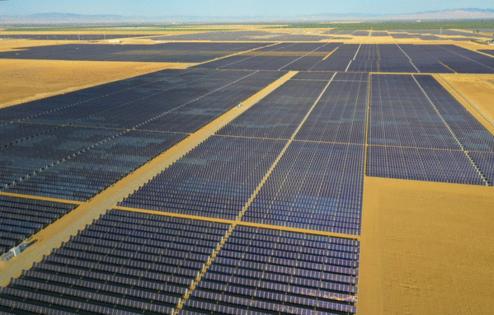Gov. Gavin Newsom boasts of California clean energy milestones
Published in News & Features
SAN DIEGO — Gov. Gavin Newsom on Monday touted that in 2023 — the latest year for which data is available — renewable and clean sources of energy accounted for 67% of California’s power.
In addition, Newsom said so far this year, nine out of 10 days on California’s electric grid were powered at least part of the day by what the state defines as clean-energy resources.
“California is the largest economy in the world to achieve this level of clean energy,” a news release from the governor’s office said, adding that the sources of clean energy include not just solar and wind power but also hydroelectricity, nuclear, geothermal and biomass.
“Not since the Industrial Revolution have we seen this kind of rapid transformation,” Newsom said in the news release.
Gary Ackerman, a utilities and energy consultant with more than four decades of experience in California power issues, acknowledged the statistics but offered a “sober reminder” of the steady rise in utility bills that customers across the Golden State pay each month.
“California’s electricity rates are among the highest in the U.S., driven by spending on wildfire risk mitigation, grid upgrades and clean energy mandates,” Ackerman said in an email to the Union-Tribune. “The state’s legislature is actively pursuing reforms to cap profits, shift upgrade costs to industry users and protect average households. However, substantial policy and billing changes will take time to implement.”
For years, California has added significant amounts of renewable energy to its electric grid to meet the state’s mandate to derive 100% of its electricity from carbon-free sources by 2045. Three years ago, Newsom set benchmarks for the state to reach 90% electricity from renewable and zero-carbon resources by 2035 and 95% by 2040.
To help reach those goals, some 25,000 megawatts of new energy resources have been added to the state’s grid since 2019, with most of that being solar and battery storage.
Of the 67% of renewable and clean-designated resources mentioned in Monday’s news release, 12% in 2023 came from large hydroelectric generation, another 12% came from nuclear power and the remaining 43% came from assorted renewable resources. The numbers came from a dashboard posted by the California Energy Commission.
As for the statistic mentioning that clean energy has powered more than nine of of 10 days, that comes from a calculation by the California Independent System Operator, the grid manager that serves about 80% of the state’s electricity demand.
So far this year, the grid has been powered by 100% clean energy for an average of almost seven hours each day. Over the course of 2024, the figure came to 3.3 hours.
But it’s important to keep in mind that wind and solar power are intermittent sources of electricity — that is, solar is not produced when the sun does not shine and wind generation drops to practically zero when the wind doesn’t blow.
Power sources such as natural gas can fill the gaps, but natural gas is a fossil fuel. That’s why California policymakers are increasingly counting on battery storage, which emits no carbon dioxide, to pick up the slack.
The amount of battery storage capacity in the state has mushroomed nearly 2,000% since 2019, reaching 15,763 megawatts as of Jan. 31 of this year.
But all that costs money and spending on clean energy programs to meet the state’s greenhouse gas reduction targets is one of the drivers of higher electricity rates that utility customers pay.
The average per kilowatt-hour price for electricity has roughly doubled since 2013 for all three major investor-owned utilities in the state — San Diego Gas & Electric, Pacific Gas & Electric and Southern California Edison — according to an annual report from the California Public Utilities Commission, or CPUC.
The report predicts electric rates will rise 5.6% to 10.8% annually through 2027, well over the rate of inflation.
CPUC officials say they’re focused on affordability concerns and reining in rate increases. In Sacramento, a slew of energy- and utility-related bills are wending their way through the Legislature.
Newsom’s announcement Monday comes on the heels of President Donald Trump signing what was dubbed the “One Big Beautiful Bill” that included energy provisions that rolled back federal spending and tax credits for renewable resources such as wind and solar.
“As the federal government turns its back on innovation and commonsense, California is making our clean energy future a reality,” Newsom said.
Newsom spent two days last week touring South Carolina, home to an early and crucial presidential primary, fueling speculation that he will enter the race to be the Democratic nominee in the 2028 presidential campaign.
©2025 The San Diego Union-Tribune. Visit sandiegouniontribune.com. Distributed by Tribune Content Agency, LLC.







Comments